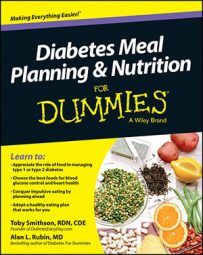If you're diabetic, some of your healthiest food choices are grains and legumes (beans), main elements of the healthy Mediterranean diet and DASH eating plans. These foods are rich in nutrients, and some are high in both soluble and insoluble fiber. Grains and beans are also carbohydrate foods, so you manage them in 15-carbohydrate-gram serving sizes at your meals.
The story with grains and beans is much the same as with the other foods — keep track of what else is included, and go for the whole foods. Pasta is a great place to start.
Pasta includes all varieties of noodles too numerous to mention — and couscous. Pasta is often made from the endosperm of durum wheat, and even though it tends toward a yellowish color, typical pasta is not whole grain. However, whole-grain pastas, which also include the bran and germ, are available in many of the standard models and are always your better choice from a nutrition standpoint.
All pasta is high in carbohydrate, and a 15-carbohydrate-gram carb choice is 1/3 cup cooked pasta. Diabetes and the giant plate of spaghetti, therefore, is not a good match for you. Some boxed pasta dishes, like macaroni and cheese or various couscous dishes, come along with a flavor packet, and you know the drill by now.
Check the nutrition facts label on these products, as well as for whatever sauces you may intend to combine with your pasta — added fat, salt, and sugar can sabotage your healthy intentions.
One pasta manufacturer uses a patented process to make some of the carbohydrate indigestible, having no effect on blood glucose. The pasta must be cooked according to specific instructions, and your blood glucose response may vary. Test your blood glucose levels before and after, and you may find extra pasta can fit on your plate.
Rice is an extraordinarily popular staple starch worldwide, including in the United States, and it’s another food high in carbohydrate — 1/3 cup of cooked rice equals 15 grams carbohydrate. Rice is also more popular in its white form, where only the endosperm portion of the grain is included. Choose whole-grain brown rice instead to improve your nutrient load and blood glucose response with a simple swap.
Rice may have a broader assortment of boxed dishes with the flavor packet than pasta, but the advice remains the same. Check the nutrition facts label for added fat, salt, and sugar, and search for healthier recipes that you can make at home.
Beans and lentils are super foods that contain carbohydrate, albeit with a slightly larger serving size for the 15 gram carb choice — 1/2 cup. Beans and lentils come unprocessed in bags, or many beans are canned for your convenience. Either way, beans and lentils are a nutritional bonanza, including cholesterol lowering soluble fiber.
For vegetarians, beans are an important source of protein as well. Watch for added salt, even in plain canned beans, and check the nutrition facts on specialty beans, like bar-b-que beans, for added fat and sugar, too.
Whole grains and legumes such as lentils are a very important part of a healthy diet. Although having diabetes requires that you manage the carbohydrates with your meal plan, don’t shy away from including these healthy options in your eating plan every day.

